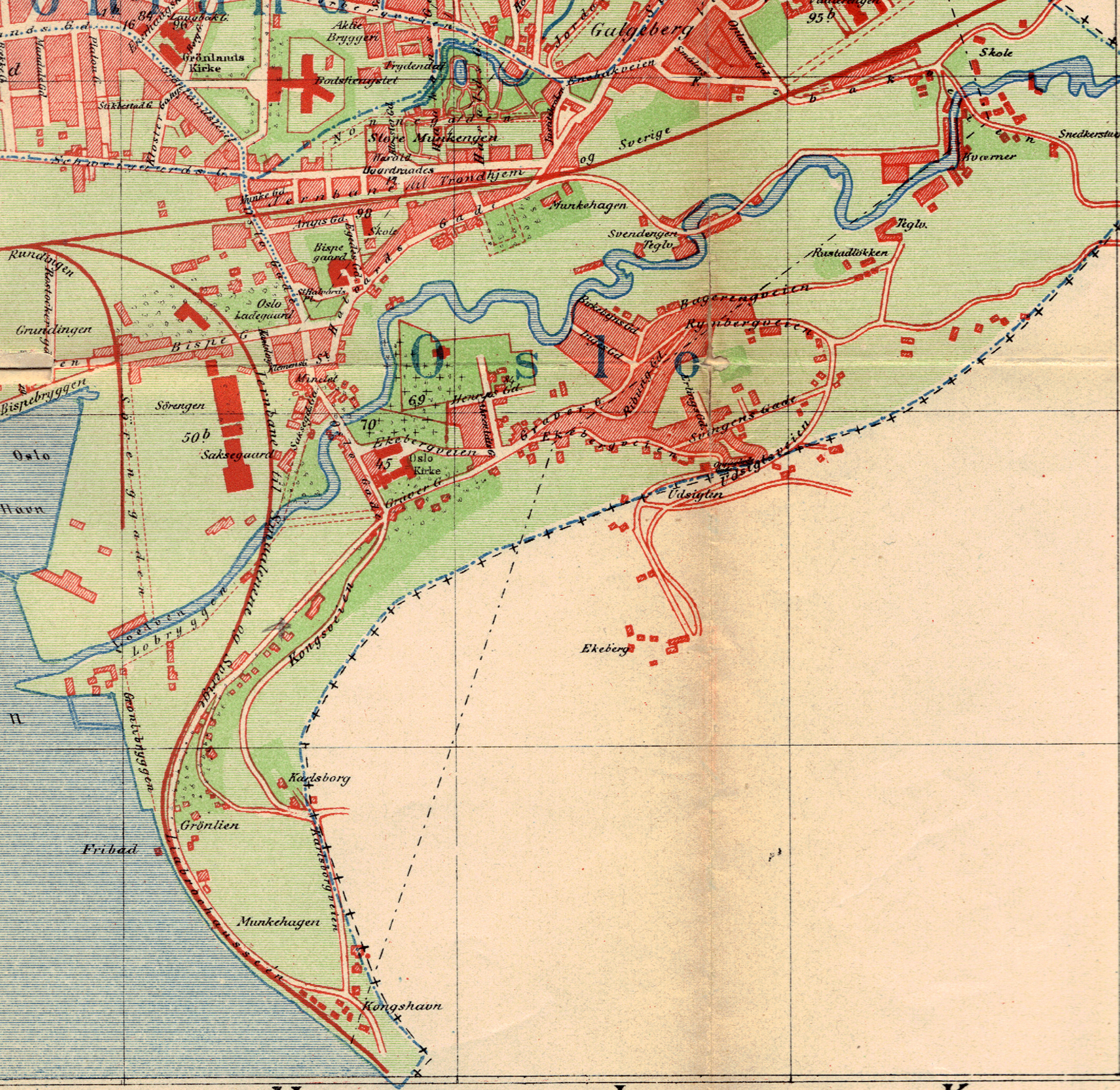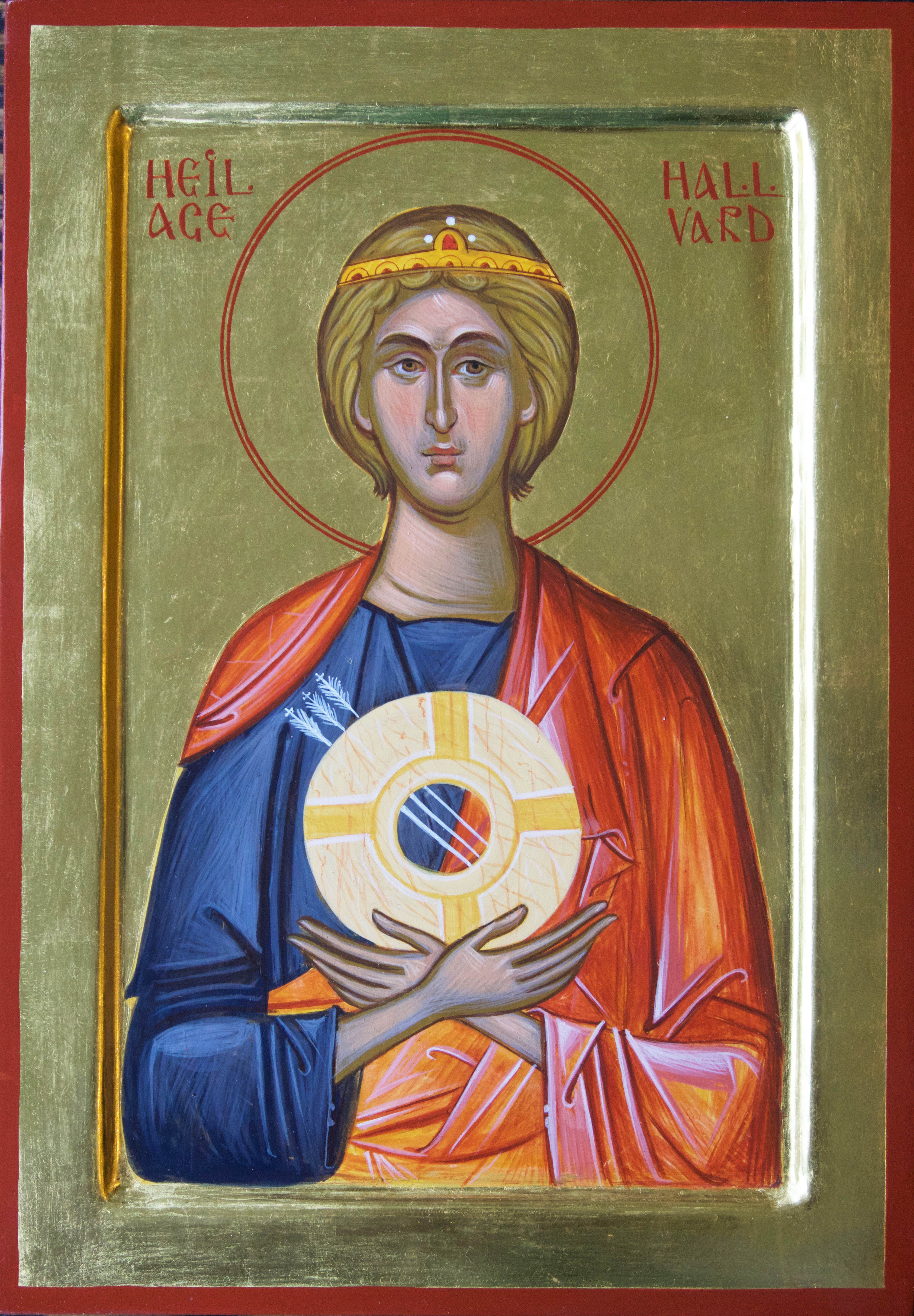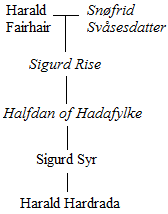|
Oslo Old Town
The Old Town of Oslo (, ) is a neighbourhood in the inner city of Oslo, Norway, belonging to the borough of Gamle Oslo and is the oldest urban area within the current capital. This part of the capital of Norway was simply called Oslo until 1925 while the city as a whole was called ''Kristiania''. Oslo's old town was established with the urban structure around the year 1000 and was the capital of Norway's dominion in 1314. The main Old Town area (i.e. the southern and central parts of Old Town) has several ruins of stone and brick lying above ground, and large amounts of protected culture underground. The core area also has listed 1700s buildings. Towards Ekeberg slope and further up are some 17th and 18th-century wooden houses that are zoned for conservation under the Planning and Building Act, though there exist in the Old Town many four-storey brick houses, built at the end of the 1800s, and some heritage railway buildings from different eras. Medieval Oslo The mediaeval ... [...More Info...] [...Related Items...] OR: [Wikipedia] [Google] [Baidu] |
Akershus Fortress
Akershus Fortress (, ) or Akershus Castle ( ) is a medieval castle in the Norwegian capital Oslo that was built to protect and provide a royal residence for the city. Since the Middle Ages the fortress has been the namesake and centre of the main fief and later main county of Akershus, which was originally one of Norway's four main regions and which included most of Eastern Norway. The fortress itself was located within the Akershus main county until 1919, and also within the smaller Akershus sub-county until 1842. The castle has also been used as a military base, a prison and is currently the temporary office of the prime minister of Norway. Construction It is not known exactly when the construction of the castle started but it is believed that it took place around the late 1290s, by King Haakon V, replacing Tønsberg as one of the two most important Norwegian castles of the period (the other being Båhus). It was constructed in response to the Norwegian nobleman, Ea ... [...More Info...] [...Related Items...] OR: [Wikipedia] [Google] [Baidu] |
Lier, Norway
Lier is a Municipalities of Norway, municipality in Buskerud Counties of Norway, county, Norway. The administrative centre of the municipality is the village of Lierbyen. The municipality of Lier was established on 1 January 1838 (see formannskapsdistrikt). The area Åssiden was transferred from Lier to the neighboring municipality of Drammen on 1 July 1951. Norway's longest indoor shopping center, Liertoppen, is located in Lierskogen. The newspaper ''Lierposten'' is published in Lier. General information Name The Old Norse form of the name was ''Líðir''. The name is the plural form of ''líð'' which means "hillside". Coat of arms The coat of arms and was designed by Hallvard Trætteberg and granted on 14 August 1970. The arms show five silver-colored apple blossoms on a red background. The area is well known for the production of various types of fruit, berries, vegetables, and flowers, so this was chosen as a symbol of the area's lush scenery and agriculture. Geograph ... [...More Info...] [...Related Items...] OR: [Wikipedia] [Google] [Baidu] |
Sigurd The Crusader
Sigurd the Crusader (; ; 1089 – 26 March 1130), also known as Sigurd Magnusson and Sigurd I, was King of Norway from 1103 to 1130. His rule, together with his half-brother Øystein (until Øystein died in 1123), has been regarded by historians as a golden age for the medieval Kingdom of Norway. He is otherwise famous for leading the Norwegian Crusade (1107–1110), earning him the eponym "the Crusader",Literally "Jerusalem-farer", but commonly translated into English as "the Crusader". and was the first European king to participate in a crusade personally. Early life Sigurd was one of the three sons of King Magnus III, the other two being Øystein and Olaf. They were all illegitimate sons of the king with different mothers. The three half-brothers co-ruled the kingdom from 1103 to avoid feuds or war. Sigurd ruled alone after Olaf died in 1115 and Øystein in 1123. Before being proclaimed King of Norway, Sigurd was styled as King of the Isles and Earl of Orkney. Neither Ø ... [...More Info...] [...Related Items...] OR: [Wikipedia] [Google] [Baidu] |
Stave Churches
A stave church is a medieval wooden Christian church building once common in north-western Europe. The name derives from the building's structure of post and lintel construction, a type of timber framing Timber framing () and "post-and-beam" construction are traditional methods of building with heavy Beam (structure), timbers, creating structures using squared-off and carefully fitted and Woodworking joints, joined timbers with joints secure ... where the load-bearing ore-pine posts are called ''stafr'' in Old Norse (''stav'' in modern Norwegian language, Norwegian). Two related church building types also named for their structural elements, the post church and palisade church, are often called 'stave churches'. Originally much more widespread, most of the surviving stave churches are in Norway. The only remaining medieval stave churches outside Norway are: Hedared stave church () in Sweden and the Vang Stave Church which was built in Norway and relocated in 1842 to cont ... [...More Info...] [...Related Items...] OR: [Wikipedia] [Google] [Baidu] |
Olav Kyrre
Olaf III or Olaf Haraldsson (Old Norse: ''Óláfr Haraldsson'', Norwegian: ''Olav Haraldsson''; – 22 September 1093), known as Olaf the Peaceful (Old Norse: ''Óláfr kyrri'', Norwegian: ''Olav Kyrre''), was King of Norway from 1067 until his death in 1093.Claus Kra''Olav 3 Haraldsson Kyrre'' (Norsk biografisk leksikon)/ref> He was present at the Battle of Stamford Bridge in England in 1066 where his father, King Harald Hardrada, saw defeat and was killed in action, an event that directly preceded his kingship. During his rule, Olaf made peace with regards to earlier royal conflicts with the church, strengthened the power of the monarchy, and is traditionally credited with founding the city of Bergen circa 1070. Around 1225, Snorri Sturluson wrote ''Olav Kyrres saga'' about King Olaf in the Heimskringla. Biography Olaf was a son of King Harald Hardrada and Tora Torbergsdatter. Olaf joined his father during the invasion of England during 1066. However, he was only 16 yea ... [...More Info...] [...Related Items...] OR: [Wikipedia] [Google] [Baidu] |
Viking Age
The Viking Age (about ) was the period during the Middle Ages when Norsemen known as Vikings undertook large-scale raiding, colonising, conquest, and trading throughout Europe and reached North America. The Viking Age applies not only to their homeland of Scandinavia but also to any place significantly settled by North Germanic peoples, Scandinavians during the period. Although few of the Scandinavians of the Viking Age were Vikings in the sense of being engaged in piracy, they are often referred to as ''Vikings'' as well as ''Norsemen''. Voyaging by sea from their homelands in Denmark, Norway, and Sweden, the Norse people settled in the Viking activity in the British Isles, British Isles, History of Ireland (800–1169), Ireland, the Faroe Islands, Settlement of Iceland, Iceland, Norse settlements in Greenland, Greenland, History of Normandy, Normandy, and the Baltic Sea, Baltic coast and along the Trade route from the Varangians to the Greeks, Dnieper and Volga trade rout ... [...More Info...] [...Related Items...] OR: [Wikipedia] [Google] [Baidu] |
Urban Structure
Urban structure is the arrangement of land use in urban areas, in other words, how the land use of a city is set out. Urban planners, economists, and geographers have developed several models that explain where different types of people and businesses tend to exist within the urban setting. Urban structure can also refer to urban spatial structure, which concerns the arrangement of public space, public and private space in cities and the degree of Permeability (spatial and transport planning), connectivity and accessibility. Zonal model This model was the first to explain distribution of social groups within urban areas. Based on one single city, Chicago, it was created by sociologist Ernest Burgess in 1924. According to this model, a city grows outward from a central point in a series of concentric rings. The innermost ring represents the central business district. It is surrounded by a second ring, the zone of transition, which contains industry and poorer-quality housing. The ... [...More Info...] [...Related Items...] OR: [Wikipedia] [Google] [Baidu] |
Harald Hardrada
Harald Sigurdsson (; – 25 September 1066), also known as Harald III of Norway and given the epithet ''Hardrada'' in the sagas, was List of Norwegian monarchs, King of Norway from 1046 to 1066. He unsuccessfully claimed the Monarchy of Denmark, Danish throne until 1064 and the List of English monarchs, English throne in 1066. Before becoming king, Harald spent 15 years in exile as a mercenary and military commander in Kievan Rus' and chief of the Varangian Guard in the Byzantine Empire. In his Gesta Hammaburgensis ecclesiae pontificum, chronicle, Adam of Bremen called him the "''Thunderbolt of the North''". In 1030, the fifteen-year-old Harald fought in the Battle of Stiklestad along-side his half-brother Saint Olaf, Olaf Haraldsson. Olaf sought to reclaim the Norwegian throne, which he had lost to Danish king Cnut two years previously. Olaf and Harald were defeated by forces loyal to Cnut, and Harald was forced into exile to Kievan Rus'. Thereafter, he was in the army of Gra ... [...More Info...] [...Related Items...] OR: [Wikipedia] [Google] [Baidu] |
Heimskringla
() is the best known of the Old Norse kings' sagas. It was written in Old Norse in Iceland. While authorship of ''Heimskringla'' is nowhere attributed, some scholars assume it is written by the Icelandic poet and historian Snorri Sturluson (1178/79–1241) 1230. The title was first used in the 17th century, derived from the first two words of one of the manuscripts (''kringla heimsins'', "the circle of the world"). is a collection of sagas about Swedish and Norwegian kings, beginning with the saga of the legendary Swedish dynasty of the Ynglings, followed by accounts of historical Norwegian rulers from Harald Fairhair of the 9th century up to the death of the pretender Eystein Meyla in 1177. Some of the exact sources of ''Heimskringla'' are disputed, but they include earlier kings' sagas, such as Morkinskinna, Fagrskinna and the 12th-century Norwegian synoptic histories and oral traditions, notably many skaldic poems. The author or authors explicitly name the now lost w ... [...More Info...] [...Related Items...] OR: [Wikipedia] [Google] [Baidu] |
Snorre Sturlason
Snorri Sturluson ( ; ; 1179 – 22 September 1241) was an Icelandic historian, poet, and politician. He was elected twice as lawspeaker of the Icelandic parliament, the Althing. He is commonly thought to have authored or compiled portions of the ''Prose Edda'', which is a major source for what is today known about Norse mythology and alliterative verse, and , a history of the Norse kings that begins with legendary material in ''Ynglinga saga'' and moves through to early medieval Scandinavian history. For stylistic and methodological reasons, Snorri is often taken to be the author of ''Egil's Saga''. He was assassinated in 1241 by men claiming to be agents of the King of Norway. Biography Early life Snorri Sturluson was born in (commonly transliterated as Hvamm or Hvammr) as a member of the wealthy and powerful Sturlungar clan of the Icelandic Commonwealth, in AD 1179. His parents were Sturla Þórðarson the Elder of Hvammur (also known as Hvamm-Sturla) and his second wi ... [...More Info...] [...Related Items...] OR: [Wikipedia] [Google] [Baidu] |
Haakon V Magnusson
Haakon V Magnusson (10 April 1270 – 8 May 1319) (; ) was King of Norway from 1299 until 1319. Biography Haakon was the younger surviving son of Magnus the Lawmender, King of Norway, and his wife Ingeborg of Denmark. Through his mother, he was a descendant of Eric IV, king of Denmark. In 1273, his elder brother, Eirik, was named junior king under the reign of their father, King Magnus. At the same time, Haakon was given the title "Duke of Norway", and from his father's death in 1280, ruled a large area around Oslo in Eastern Norway and Stavanger in the southwest, subordinate to King Eirik. Haakon succeeded to the royal throne when his older brother died without sons. Haakon's eldest daughter was Princess Agnes Haakonsdatter, born out of wedlock in 1290 to Gro Sigurdsdatter, daughter of Sigurd Lodinsson and wife Baugeid Steinarsdatter. In 1295, Haakon married firstly with Isabelle, daughter of Jean I, Count of Joigny, but she died in 1297 without children. In earl ... [...More Info...] [...Related Items...] OR: [Wikipedia] [Google] [Baidu] |






